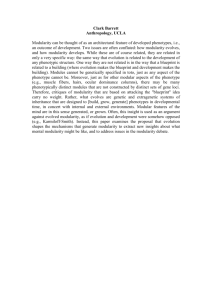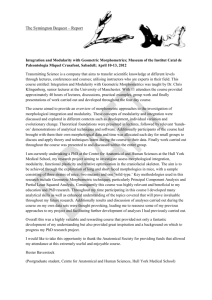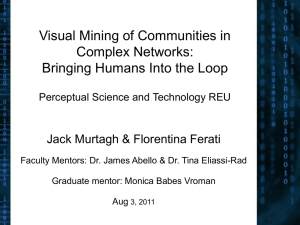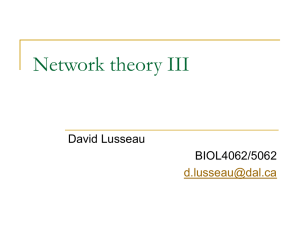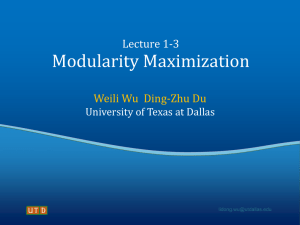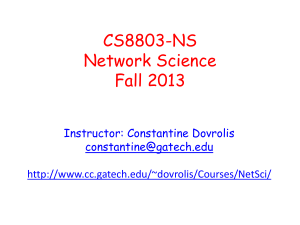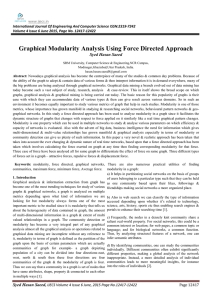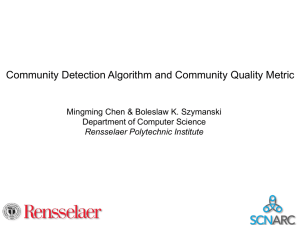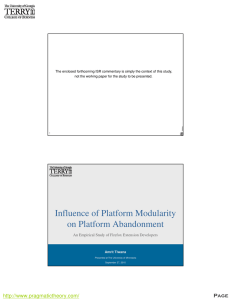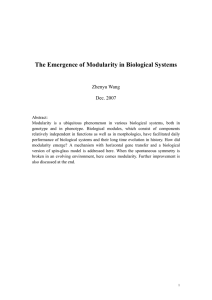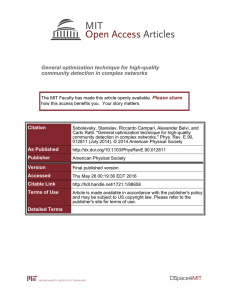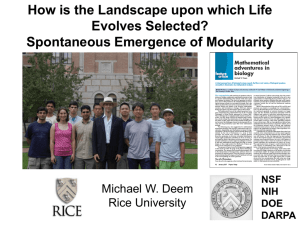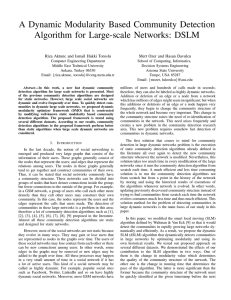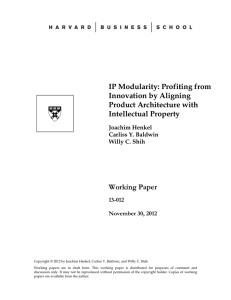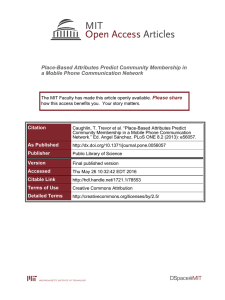Communities
advertisement
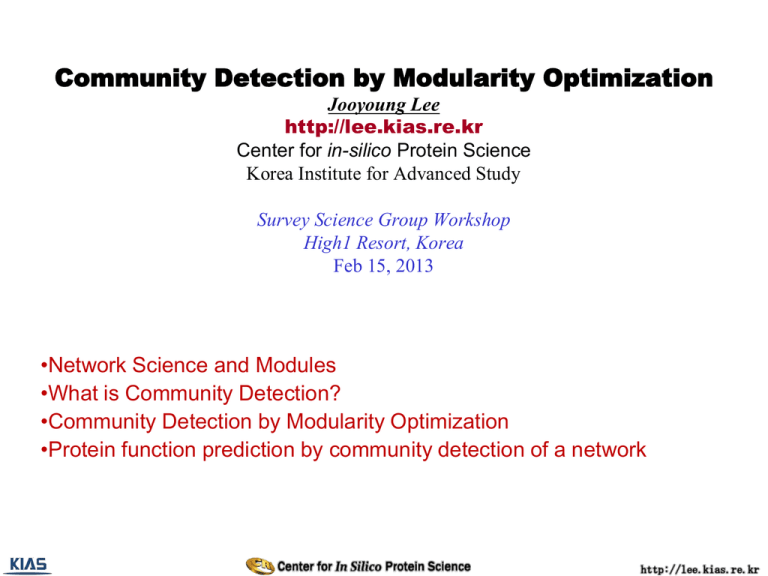
Community Detection by Modularity Optimization Jooyoung Lee http://lee.kias.re.kr Center for in-silico Protein Science Korea Institute for Advanced Study Survey Science Group Workshop High1 Resort, Korea Feb 15, 2013 •Network Science and Modules •What is Community Detection? •Community Detection by Modularity Optimization •Protein function prediction by community detection of a network 3 Communities (modules) in networks • Biological networks are consisted of communities • Community – Module – Partition – Cluster • Functional modules • Protein complexes • Gene clusters Communities in yeast protein-protein interaction network “Community/Module Detection” by Modularity Optimization • Divide a network into sub-graphs/modules – nodes are more densely connected internally • The most commonly used objective function to evaluate the quality of partition is Q proposed by Girvan and Newman ls d s 2 Q s 1 L 2 L r ls :Number of intra-community edges in s d s : Sum of degrees of nodes in s L : Total number of edges in a network 5 Which one is better? Zachary’s karate club network Friendship network of members Q=0.420 Q=0.379 We need an objective function! Two Issues with Modularity Q (1) Difficulty of the problem: – Finding the best Q partition is a hard combinatorial optimization problem (NP-hard) – The current best stochastic optimization method is simulated annealing (SA) (2) Relevance of the objective function: – Is a higher-Q solution more useful to extract hidden information from a network? – "So far, most works in the literature on graph clustering focused on the development of new algorithms, and applications were limited to those few benchmark graphs that one typically uses for testing" from Community Detection in Graphs (2010), Physics Report Three Benchmark Tests of Q-Optimization 8 Benchmark Test #1: LFR graphs • Networks are generated from known/assigned community structure. • More (less) edges are assigned between nodes within (between) a community. • We generate edges with a fixed mixing probability: – Mixing probability 0.1 • 10% of inter-community edges • 90% of intra-community edges 9 Mixing probability = 0.1 10 Mixing probability = 0.6 11 Test on LFR graphs 50 simulations of CSA and SA (PRE 85, 056702 (2012) Mixing Modularity Accuracy tCSA(sec) tSA(sec) <QCSA>/<QSA> <ACCCSA>/ <ACCSA> 0.10 0.8638 / 0.8638 0.9994 / 0.9994 107.5 2422.4 0.20 0.7585 / 0.7585 0.9990 / 0.9990 100.4 4095.3 0.30 0.6641 / 0.6641 0.9974 / 0.9974 128.1 3596.5 0.40 0.5641 / 0.5639 0.9936 / 0.9926 175.1 4784.9 0.50 0.4675 / 0.4665 0.9705 / 0.9675 276.4 8350.1 0.60 0.3711 / 0.3691 0.8671 / 0.8545 699.2 94170.1 Prob. Higher modularity and more accurate partitions are obtained using less computational time (only ~5%) Benchmark Test #2: real-world networks PRE 85, 056702 (2012) 13 Conclusions • We developed a highly efficient modularity optimization method by using CSA • Higher modularity partitions are functionally more coherent • We developed the first module-assisted function prediction algorithm which outperforms neighbor-assisted methods – Extracting maximal information from network topology itself • Our method is general and can be applied to other networks Acknowledgements Community Detection: Juyong Lee (KIAS, NIH) Steven Gross (UC Irvine) Cluster computers: KIAS/CAC Supported by the Korea Science and Engineering Foundation (KOSEF) grant funded by the Korean government (MEST) (No. 2009-0063610) Postdoc/Researcher Positions Available
